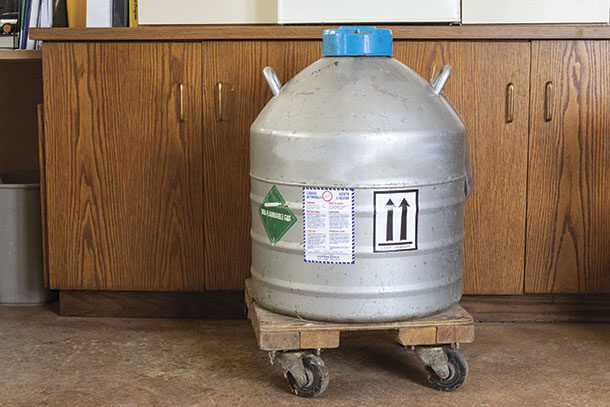Saving money on feed costs is never a question to be debated. In 2020, the Council for Dairy Cattle Breeding (CDCB) began offering a genetic indicator designed to aid in creating dairy cows able to utilize the feed they consume more efficiently for the level of milk, fat and protein they produce. The trait is called Feed Saved (FS) and it is designed to identify cows that produce at common levels on a reduced feed intake. Sounds like what many dairy farmers are looking for, so why would I suggest there could be a debate? Let’s first define FS as a genetic trait and then look at where FS might fit into our genetic list of priorities.
“The FS predicted transmitting ability [PTA] represents the expected pounds of feed saved per lactation based on evaluations for Bodyweight Composite (BWC) and Residual Feed Intake (RFI). Evaluations are expressed in pounds of feed saved per lactation above or below the breed average. Larger, positive values are more favorable,” according to the CDCB. (Figure 1)
As you can see, there are two moving parts in the FS calculation; one is essentially the feed required for maintenance based on body size – smaller cows need less maintenance – and the second and newer calculation is the RFI, which the CDCB defines as "the difference between an animal’s actual feed intake and its expected feed intake based on its size and growth compared to the breed average base.”

CDCB expresses RFI in pounds of dry matter intake (DMI).
For example, daughters of a Holstein bull with a FS PTA of over 200 pounds per lactation are expected to consume an average of 200 pounds less than expected feed based on production and body size. Daughters of a Holstein bull with a FS PTA of -300 pounds per lactation are expected to consume an average of 300 pounds of feed per lactation more than expected based on production and body size.
In simplest terms, if cow A uses less feed to produce the same level of production as cow B, cow A is more feed efficient and her genetic profile offers reduced feed costs. What can we expect monetarily from utilizing FS values? The Holstein Association USA illustrates the impact of FS in Figure 2 as to what each point of FS could equate in each cow’s lifetime on average. In this example, each point of FS is valued at 11 cents per pound of dry matter saved, so for the 100 pounds of feed saved (via a combination of reduced maintenance or efficiency in feed conversion), at 11 cents per pound of DMI, you would save $11 for that lactation. And as expressed in this example, in an average lifetime of 2.6 lactations, this cow saves $29 in feed costs over the breed average for her production level.

So now that we have a working illustration of what genetic opportunities are available to select for using PTA FS, how might we utilize FS from the December 2022 CDCB Sire Summary?
The average top 100 active PTA FS sires in the December 2022 CDCB Sire Summary have a 470 PTAFSAV. At 11 cents per pound of dry matter saved, multiplied by 470 pounds of dry matter, that's $51.70 in feed savings per lactation. This can be thought of as an average of $134.42 reduction in DMI in her lifetime production costs when compared with her breed average feed-saved contemporaries that produce at the same level of production.
Sounds impressive, right? The debate begins when we start to consider where feed saved should fit as a genetic tool in our overall future genetic strategy profile (Table 1).
 These top 100 PTAFS sires with their average 470 PTAFSAV have an overall average of $880 Lifetime Net Merit (NM$) or $768 Herd Health Profit Dollars (HHP$), depending on where your genetic selection goals align. (For this discussion, we’ll be referencing HHP$, but this index can be substituted for the index of your choice.) In contrast, the top 100 NM$ sires average 1,188 NM$ for overall lifetime profit, while providing a 278 PTAFSAV included and the top 100 HHP$ sires average 1,182 HHP$ in lifetime net profit, while providing 147 PTAFSAV.
These top 100 PTAFS sires with their average 470 PTAFSAV have an overall average of $880 Lifetime Net Merit (NM$) or $768 Herd Health Profit Dollars (HHP$), depending on where your genetic selection goals align. (For this discussion, we’ll be referencing HHP$, but this index can be substituted for the index of your choice.) In contrast, the top 100 NM$ sires average 1,188 NM$ for overall lifetime profit, while providing a 278 PTAFSAV included and the top 100 HHP$ sires average 1,182 HHP$ in lifetime net profit, while providing 147 PTAFSAV.
When we do the math, we see that the current top 100 genetic sire offerings for FS reduced DMI an average of $135 in lifetime savings, but unfortunately those sires are limited to only 880 NM$ or 768 HHP$ in lifetime profit. At the same time, the top 100 genetic sire offerings for overall profitability defined either by NM$ or HHP$ are providing an additional 308 NM$ in lifetime profit or an additional 414 HHP$ lifetime profitability, though one does give up ($54.92) in increased DMI for a NM$ focus or ($92.42) in increased DMI for an HHP$ selection index focus compared to the $135 lifetime reduction in DMI from the top 100 PTAFS sires.
Clearly Feed Efficiency or FS gains are being realized when we maintain selection pressure for NM$ or HHP$, without the need to focus directly on PTAs for FS. This is in part because "reduced stature genetics" are being rewarded in every selection index today, with stature moderation a common denominator in which profit-based indexes are simultaneously providing gains in feed efficiency, as well as utilization RFI.
The point here is that while feed costs are the largest daily cash flow cost for any dairy, many variables influence any replacement’s lifetime profitability, and they all need to have appropriate consideration – thus the debate as to where one is to place a focus on the utilization of feed-saving genetic opportunities.
Still not sure where to focus genetically for reducing feed costs? Consider a greater focus on your female population. You have much greater genetic opportunity for change in any trait looking within your female population than you do in sire segmentation. A female genetic ranking quickly points out who should and should not be the maternal contributors to your next generation. Draw up an alternative plan for those lower-ranking, less-feed-efficient females. Selection pressure on the maternal side of your genetic selection process has more feed-efficiency opportunities for the next generation than you will ever find in the available sires who rank well for your genetic index of choice.
The "great feed debate" lies in the following question: Where do you position feed efficiency into creating your future genetic profile?








